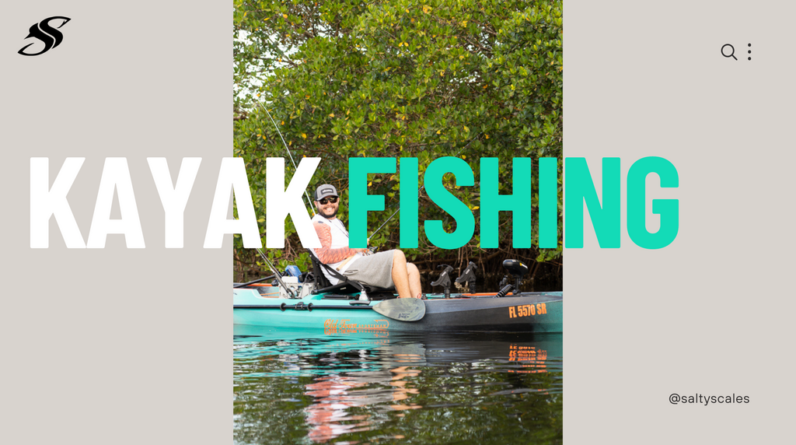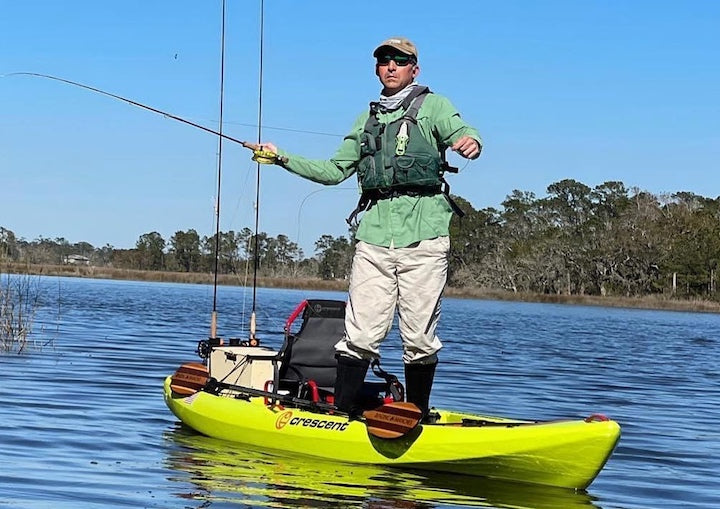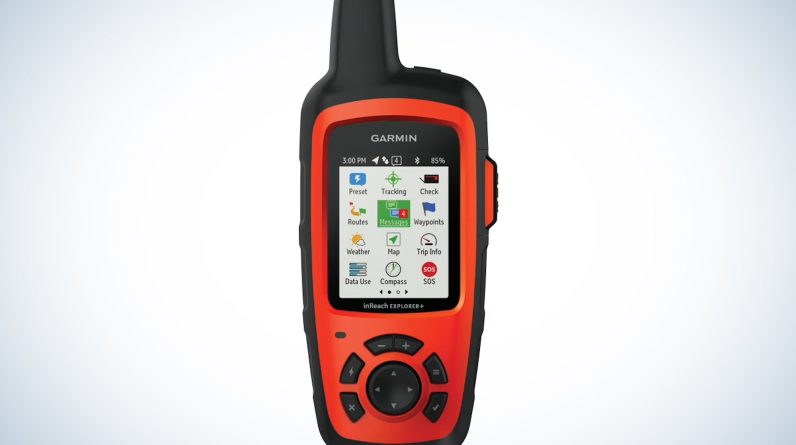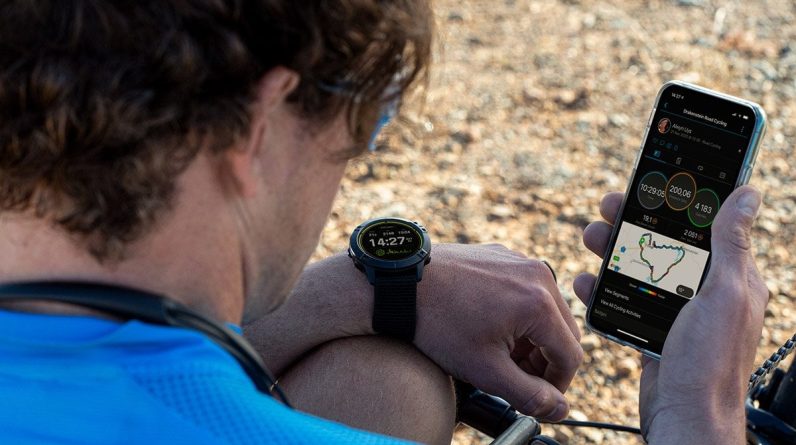
So, you’re ready to embark on your next adventure: fly fishing from a kayak. But before you set off, it’s essential to make sure you have the right fishing tackle for the job. With so many options available, it can be overwhelming to know where to start. That’s where this ultimate guide comes in. In this article, we’ll walk you through everything you need to consider when choosing the perfect fly fishing tackle for kayak fishing. From rods and reels to lines and flies, we’ve got you covered. So, get ready to hit the water with confidence and reel in your best catch yet.

This image is property of i.ytimg.com.
Choosing the Right Fly Fishing Tackle for Kayak Fishing
When it comes to fly fishing from a kayak, choosing the right tackle is essential for a successful and enjoyable experience on the water. From selecting the appropriate fly fishing rod to choosing the best flies, there are several factors to consider. In this comprehensive guide, we will explore the different components of fly fishing tackle, discuss considerations specific to kayak fishing, and provide tips for maintaining and caring for your tackle.
Understanding the Basics of Fly Fishing Tackle
Before diving into the specifics of kayak fishing, it’s important to have a solid understanding of the basics of fly fishing tackle. Fly fishing tackle is made up of several different components, including fly rods, reels, lines, and leaders.
Different Components of Fly Fishing Tackle
A fly fishing rod is an important tool that helps you cast the fly to your target. It consists of a rod blank, handle, reel seat, and guides. The reel is attached to the rod and holds the fly line. Fly lines are specifically designed for fly fishing and come in various weights and tapers. Leaders and tippets are the final components, which connect the fly line to the fly.
Fly Rods, Reels, Lines, and Leaders Explained
Fly rods are typically made from materials such as graphite, fiberglass, or bamboo. Each material has its own characteristics and performance qualities. Graphite rods are the most commonly used due to their lightweight and versatility. Reels, on the other hand, are designed to hold and release the fly line. They come in different sizes and types, including single-action, multiplier, and automatic reels.
Fly lines are available in different weights and tapers to match the rod you are using and the type of fishing you plan to do. The weight of a fly line is primarily determined by the size of the fly being used and the target species. Lastly, leaders and tippets are used to provide a smooth transition from the fly line to the fly. They are typically made of monofilament or fluorocarbon material and come in various lengths and strengths.
Key Terminology to Know
To make the most informed decisions when choosing your tackle, it’s essential to familiarize yourself with some key fly fishing terminology. Learning about terms such as weight ratings, action, reel drag systems, and line tapers will enable you to make more educated choices when selecting your tackle.
Considerations for Kayak Fishing
Fishing from a kayak presents its own unique set of challenges, which should be taken into account when choosing tackle. Understanding these considerations will help you select the right gear that is suitable for kayak fishing.
Unique Challenges of Kayak Fishing
Kayak fishing requires maneuvering in a small and often unstable watercraft. This means that your gear needs to be streamlined and compact, allowing for efficient and hassle-free movement. Additionally, the limited space on a kayak necessitates careful organization and storage of your tackle.
Importance of Streamlined and Compact Tackle
When fishing from a kayak, your fly fishing tackle should be streamlined and compact. This is to ensure that it doesn’t interfere with your casting or create unnecessary obstacles on the kayak. Opting for shorter fly rods and compact reels can help minimize the chances of snagging or tangling your line while in the kayak.
Factors to Consider for Kayak Fishing Tackle
When selecting tackle for kayak fishing, it’s important to consider the type of water you’ll be fishing in, the target species, and the fishing techniques you plan to employ. Different types of water, such as rivers, lakes, or saltwater, may require specific tackle considerations. Similarly, the type of fish you’re targeting will dictate the size and strength of your gear. Finally, the fishing techniques you plan to use, such as dry fly fishing or nymph fishing, will influence your choice of tackle.
Selecting the Appropriate Fly Fishing Rod
Selecting the right fly fishing rod is crucial for kayak fishing. The rod you choose should be appropriate for the conditions you’ll be fishing in and the target species you plan to pursue.
Understanding Fly Rod Types and Lengths
Fly rods come in various types and lengths. Types of fly rods include single-handed rods, double-handed rods, and switch rods. Single-handed rods are the most commonly used for kayak fishing, as they provide versatility and ease of use. The length of a fly rod can range from 6 to 10 feet or more. Shorter rods are generally preferred for kayak fishing due to limited space and the need for convenient movement.
Weight Ratings and Their Significance
Fly rods are designated with weight ratings, typically ranging from 1 to 12. The weight rating determines the size and weight of the fly line the rod can handle. Larger fish species and heavy flies require higher weight-rated rods. For kayak fishing, a weight rating of 4 to 7 is generally sufficient for targeting a wide range of fish species.
Materials and Construction
Fly rods are constructed using different materials, including graphite, fiberglass, and bamboo. Graphite rods are the most popular choice due to their lightweight, sensitivity, and durability. Fiberglass rods are known for their flexibility and forgiveness, while bamboo rods offer a traditional and classic feel. Consider the material and construction of the rod based on your personal preferences and fishing style.
Evaluating Performance and Flexibility
When selecting a fly fishing rod, it’s important to evaluate its performance and flexibility. A good fly rod should have a fast tip recovery, which allows for accurate and smooth casting. Flexibility, or the action of the rod, can vary from fast to slow. Moderate-fast or medium action rods are generally suitable for kayak fishing, as they provide a good balance of power and sensitivity.

This image is property of cdn.shopify.com.
Choosing the Right Fly Fishing Reel
The fly fishing reel is an essential part of your tackle setup, and choosing the right one is crucial for kayak fishing success.
Understanding Fly Reel Types and Features
Fly reels come in different types, including single-action, multiplier, and automatic reels. Single-action reels are the most common and popular choice for kayak fishing due to their simplicity and reliability. The features to look for in a fly reel include a smooth drag system, a durable construction, and a secure reel seat attachment.
Matching Reel to Rod Weight
When selecting a fly reel, it’s important to choose one that matches the weight of your fly rod. This ensures proper balance and optimal performance. Fly reels are often labeled with the weight range they can accommodate, making it easier to select the appropriate reel for your rod.
Drag Systems and Reel Sizes
The drag system of a fly reel is responsible for controlling the resistance when a fish takes line. There are two main types of drag systems: click-and-pawl and disc drag. Click-and-pawl reels offer simplicity and precision, while disc drag reels are known for their smooth and powerful performance. The size of the reel is dependent on the weight of the fly line you’ll be using, as well as the line capacity you require.
Quality and Durability Factors
Durability is an important factor to consider when choosing a fly reel for kayak fishing. The reel should be constructed with corrosion-resistant materials such as aluminum or stainless steel to withstand the effects of saltwater or freshwater environments. Additionally, consider the quality of the reel’s components, including the handle, spool, and reel foot, to ensure longevity and reliability.
Picking the Correct Fly Line
Selecting the right fly line is essential for achieving optimal casting performance, proper fly presentation, and successful hook sets.
Understanding Fly Line Weight and Taper
Fly lines come in different weights and tapers. The weight of the fly line is designated by a number ranging from 1 to 14, with higher numbers indicating a heavier line. The weight of the fly line should match the weight rating of your fly rod. Taper, on the other hand, refers to the change in diameter and thickness of the line. There are several taper options available, including weight-forward, double taper, and shooting heads.
Different Types of Fly Lines
In addition to weight and taper, there are different types of fly lines designed for specific fishing scenarios. Floating lines are the most commonly used and are suitable for a variety of fishing techniques. Intermediate lines sink slowly and are ideal for fishing in shallow waters. Sink-tip lines sink at the tip, allowing for deeper presentations. Full-sinking lines are designed to sink at a consistent rate and are used for fishing in deep waters.
Considerations for Line Density
When selecting a fly line for kayak fishing, consider the density of the line based on the water conditions and target species. Floating lines are versatile and suitable for most kayak fishing scenarios. However, if you plan to fish in deeper waters or target species that inhabit the depths, sink-tip or full-sinking lines may be more appropriate.
Matching Fly Line to Fly Rod and Reel
To ensure optimal performance, it’s important to match your fly line to your fly rod and reel. The weight of the fly line should correspond to the weight rating of your fly rod, while the capacity of the reel should accommodate the chosen fly line. Properly matching your tackle will result in smoother casting, improved line control, and better fly presentation.

This image is property of cdn.shopify.com.
Selecting the Right Leaders and Tippets
Leaders and tippets are crucial components of your fly fishing setup, providing a smooth transition between the fly line and the fly itself.
Difference between Leaders and Tippets
Leaders and tippets are both used to connect the fly line to the fly, but they serve different purposes. A leader is a tapered section of monofilament or fluorocarbon line that helps transfer energy from the fly line to the fly during casting. Tippets, on the other hand, are thin sections of line attached to the end of the leader to provide invisibility and strength.
Understanding Leader and Tippet Materials
Leaders and tippets are commonly made from monofilament or fluorocarbon material. Monofilament leaders are generally more affordable and have better knot strength, making them suitable for most fishing situations. Fluorocarbon leaders and tippets are virtually invisible underwater, making them ideal for targeting selective or wary fish species.
Length and Strength Considerations
The length and strength of your leader and tippet depend on various factors, including the size of the fly, the target species, and the fishing conditions. For kayak fishing, leaders and tippets in the range of 7 to 9 feet are generally sufficient. The strength of your leader and tippet should be matched to the weight rating of your fly rod and the size of the fish species you’re pursuing.
Matching Leaders and Tippets to Fly Line and Fly
To ensure a seamless connection between your fly line, leader, tippet, and fly, it’s important to match the diameters and strengths of each component. The leader should have a diameter that tapers down to the desired tippet size based on the fly you’re using and the conditions you’re fishing in. Matching these components will result in a well-balanced setup that enhances your chances of hooking and landing fish.
Choosing the Best Flies for Kayak Fishing
Selecting the right flies is crucial for catching fish while kayak fishing. Understanding different fly patterns and their suitability for various fish species and environments will allow you to make informed choices.
Understanding Different Fly Patterns
Fly patterns come in a wide variety, ranging from dry flies to streamers and nymphs. Dry flies imitate insects that float on the water’s surface, while streamers mimic small baitfish or other underwater prey. Nymphs, on the other hand, imitate aquatic insects in their various life stages.
Matching Flies to Targeted Fish Species
Different fish species have specific feeding habits and preferences. Matching your flies to the target species is essential for success. Research the local fish species in your kayak fishing area and identify the insects or prey they commonly feed on. This will help you select flies that closely resemble their natural food sources.
Considerations for Flies in Different Environments
The environment in which you’ll be kayak fishing plays a significant role in fly selection. Different bodies of water, such as rivers, lakes, or saltwater, have their own unique ecosystems and fish species. Consider the water conditions, such as water temperature, clarity, and flow, to choose flies that are suitable for the environment.
Essential Flies to Carry for Kayak Fishing
While the specific flies you carry will depend on the targeted fish species and the fishing conditions, there are a few essential fly patterns that every kayak angler should have in their arsenal. These include versatile flies that can be effective in a wide range of situations, such as Woolly Buggers, Pheasant Tail Nymphs, and Elk Hair Caddis.

This image is property of oldtownwatercraft.johnsonoutdoors.com.
Considering Fly Storage and Organization
Proper fly storage and organization are essential for a successful day of kayak fishing. Ensuring your flies are easily accessible and protected from water damage will enhance your efficiency on the water.
Importance of Proper Fly Storage
Storing your flies properly is important to prevent damage and ensure their longevity. Wet flies or flies that are not dried properly can deteriorate quickly and lose their effectiveness. Proper storage methods also protect your flies from getting tangled or crushed.
Different Fly Storage Options
There are various fly storage options available, including fly boxes, fly patches, and fly wallets. Fly boxes are the most common and versatile storage solution. They come in different sizes, with compartments or foam slits to securely hold your flies. Fly patches are designed to attach to your fishing vest or kayak, providing easy access to a selection of flies. Fly wallets are ideal for protecting large, delicate, or articulated flies.
Organizing Flies for Easy Access
Proper organization of your flies is essential for quick and efficient fly changes while on the water. Organize your flies by type, size, and pattern to easily locate the desired fly when needed. Utilize labeled compartments or foam slits in your fly boxes to keep everything organized and readily accessible.
Tips for Keeping Flies Dry and Protected
To keep your flies dry and protected, consider using waterproof fly boxes or adding desiccant packets to absorb moisture. Avoid storing wet flies or flies with water droplets in your storage boxes and ensure they are appropriately dried before storage. Additionally, handle your flies with care to prevent crushing the delicate materials and preserve their effectiveness.
Other Essential Tackle and Accessories
In addition to the core components of fly fishing tackle, there are several other essential items and accessories that can enhance your kayak fishing experience.

This image is property of oldtownwatercraft.johnsonoutdoors.com.
Tips for Maintaining and Caring for Your Tackle
Proper maintenance and care of your fly fishing tackle will help prolong its lifespan and ensure optimal performance. Consider the following tips to keep your tackle in top condition:
Cleaning and Maintenance Guidelines
After each fishing trip, rinse your fly rod, reel, and fly line with freshwater to remove any salt or dirt buildup. Inspect your tackle for any signs of damage or wear and address any issues promptly. Regularly clean and lubricate the reel to maintain its smooth operation. Avoid exposing your tackle to extreme temperatures or prolonged sunlight, as this can cause damage.
Proper Storage and Transportation
When not in use, store your fly fishing tackle in a cool, dry place to prevent damage or corrosion. Properly secure your rods and reels with rod holders and protective cases during transportation to prevent any accidental damage.
Tips for Extending the Lifespan of Your Tackle
To extend the lifespan of your fly fishing tackle, practice proper fishing techniques and avoid subjecting your gear to unnecessary stress. Avoid high-sticking your rod or overloading your reel with excessive line pressure. Regularly inspect your leader and tippet for any signs of wear or fraying and replace them as needed.
By considering these tips for maintaining and caring for your tackle, you will be able to enjoy many successful kayak fishing adventures with gear that is in excellent condition.
In conclusion, choosing the right fly fishing tackle for kayak fishing is crucial for a successful and enjoyable experience on the water. Understanding the basics of fly fishing tackle, considering the unique challenges of kayak fishing, and making informed choices about rods, reels, lines, leaders, and flies will greatly enhance your chances of catching fish. Additionally, proper fly storage, organization, and maintenance will ensure the longevity of your tackle. By following the tips and guidelines provided in this comprehensive guide, you’ll be well-equipped to make the right choices and care for your tackle, resulting in many memorable kayak fishing experiences.






